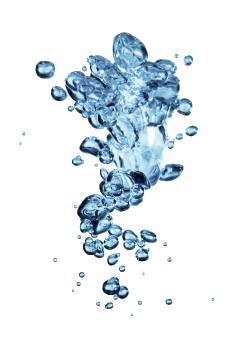
3 minute read
Levels of Service
The community were asked for their input along the way (refer to section ‘What does the community say?’). A Project Reference Group was also established to provide input to the development of the Integrated Water Cycle Management strategy. This group consisted of:
Representatives from our regulators, including DPI Water, the EPA, and NSW Health; Representatives from other organisations, including business chambers and Local Land Services; Community representatives, including those representing oyster growers, Landcare and local youth Local council representatives; MidCoast Water councillors; and MidCoast Water staff.
In 2008, we estimated that if the ideas of water efficiency and catchment management were embraced, the capacity of the current infrastructure in our largest water supply scheme, the Manning scheme, will continue to meet our needs until 2036. Then by progressing down the path of either indirect potable reuse, brackish desalination or new storages, we could secure the water resources for our community.
During the review of Our Water Our Future, we have discovered that the trigger point for our long term solution is several years earlier than previously thought. This has been due to new ‘secure yield’ modelling that has taken into account various climate change scenarios. This modelling is required by one of our regulators, DPI Water, who also set out guidelines on how the modelling should be done.
The latest round of modelling followed the NSW guidelines on ‘Assuring future urban water security’ and used 15 global climate models which provide daily rainfall and evapotranspiration data. These global climate models represent a range of different climate scenarios and allowed us to assess what our secure yield would look like under various conditions.
Our levels of service are a form of agreement we have with our customers regarding the quality of the services we provide. Our ‘gaps’ in our levels of service were looked at as part of the Integrated Water Cycle Management review process. That is, we paid particular attention to those areas where we have not met our levels of service and the areas where we predict we may have trouble meeting the levels of service in the future.
The target levels of service include:
System failures - number and frequency of failures, response time to failures Environmental protection –compliance with EPA licences Drinking water quality – Australian Drinking Water Guidelines Customer satisfaction Catchment protection and sustainability – adhering to water sharing plans Water restrictions – 5/10/10 rule (see explanation below)
This Integrated Water Cycle Management plan is mainly concerned with strategic issues rather than day to day operational issues; however operational issued were considered.
Securing water supplies
The 5/10/10 rule is a water supply headworks design rule set by one of our regulators, DPI Water. Adhering to this design rule is meant to ensure that:
Water restrictions are in place for no more than 5% of the time Water restrictions occur on average once every 10 years During water restrictions, demand is not required to be reduced by more than 10%.
The implications for MidCoast Water are that we will require large infrastructure investment over the coming 30 years, for most of our water supply schemes, in order to meet the 5/10/10 rule and ensure water security.
The community has indicated that they would be comfortable with water restrictions that occur more frequently, for longer periods of time and are harsher. This means that we can postpone large expensive infrastructure and live with the risk of water restrictions until this infrastructure is built; thereby deferring significant investment and increases in rates.
MidCoast Water aspires to do more than just comply with our EPA licences. As well as ensuring that we treat effluent to the required quality, we manage effluent sustainably and currently recycle approximately 25% of all of our effluent.
We aim to increase the percentage of effluent recycled over the coming 30 years and we will continue our important catchment protection works.
Key performance indicators and targets
Each year, MidCoast Water reports progress against key performance targets in the annual State of the Environment Report. These can be found at http://www.midcoastwater.com.au/site/stat e-of-the-environment-reports.
These targets allow us to track our performance and include such indicators as:
drinking water compliance customer satisfaction volume of effluent released to waterways and groundwater volume of residential savings resulting from rainwater tank rebates biosolids recycling average water and sewer bills
We are already meeting our 2016 targets in many of these areas. Several of these targets have been reviewed as part of this Integrated Water Cycle Management strategy and these are detailed in the section titled ‘Key performance indicators and targets’ .







